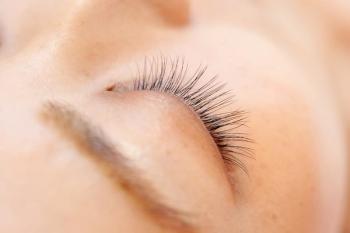
Artificial Tears for Dry Eye Disease
The most common types of artificial tears recommended to help manage dry eye disease and the importance of proper use for full benefit.
Episodes in this series

Cynthia Matossian, MD, FACS: When it comes to artificial tears, which so many of our patients use, they go to the drug store. They’re overwhelmed by the shelf with tens or dozens of bottles. Kelly, how do you guide your patients on how to select their tears? Do you sell them in your practice? Do you specify ones that have oil in them or ones that are preservative-free? How do you do it?
Kelly K. Nichols, OD, MPH, PhD, FAAO: We’re a teaching clinic, and so we can’t specifically recommend just one. We have to show the students the different brands, etc. It’s important for them to have exposure to as many of them as they can so they can make their own decisions once they are treating patients out in practice. Certainly, I tend to go for lipid-containing products because usually there is a lipid deficiency in most dry eye. But there are several good products. Those are usually the ones that are on the top shelf and not on the lower layers. Just the other day I was talking to somebody, not in the context of the clinic, but outside. She brought it up; she didn’t know I was an optometrist. She was asking, “Have you ever tried to buy eye drops at the grocery store? What do you pick? I get swayed by the price,” is what she told me. I think a very specific recommendation from a practitioner to a patient, whether you write it down or show them a picture or if you have a sample, give them a sample, so they know what to look for once they get to that massive section in the grocery store, and they don’t get swayed by whatever is on sale. If you can, tell them why those products are better, and that even though most artificial tears are similar, they do have inactive ingredients that have some action or activity to them that are helpful. I think the recommendation starts first. Then it’s how often they use it too because if they just use it once, a lot of patients use tears wrong. They use them once when their eyes are starting to feel bad, and they’re not using them several times a day. So they’re probably not getting the full benefit. But in my mind when somebody is not using them to the way they should be used, and they come to you saying that they’re not getting relief, that’s an artificial tear failure and time to move on to a different treatment. But I probably should let Milt comment on this too because he’s been so patient over there. Milt?
Milton M. Hom, OD, FAAO: I remember back in the old days. It was like all artificial tears are the same. It was saline in a dropper bottle. But since that time, artificial tears have changed so much. There is so much technology in artificial tears, it’s crazy. A lot of that technology comes from drugs. Drug development in general, topical drug development. There’s a lot of technology. There’s a question, should you use a generic artificial tear, or should you use a branded artificial tear? The branded artificial tears actually are the ones loaded with the technology. The generic artificial tears are more of the older technology, the older types of artificial tears. One of the big advancements is nano, nanomicellular technology. We’re seeing that in virtually all of the branded artificial tears and also in all of the drugs, the topical drugs we use.
Nano is fantastic because there are 3 different phases with the nanomicellular technology. We know that there’s the surface, which is the mucin layer, and the mucin layer has pores in it. It’s like a spider web. These pores are nano-sized, so in other words if you have nanomicellular technology, it’s more likely to penetrate the pore in the ocular surface. The mucus layer is also very hydrophilic; a lot of pathogens are hydrophobic, so what happens? The pathogen comes in, and the mucus layer bounces it right off. Nanomicellular technology, what that does is it makes the surface of the particle hydrophilic.
Finally, the third thing is the charges. We know that the mucin layer has multiple charges. It has positive charges; it has negative charges. What happens when this charged particle comes in or a pathogen comes in? It gets trapped by the mucus layer. Nano technology gives it a neutral charge, so the charges of the mucin layer do not effect it. It’s smaller because it’s nano-sized, and also it’s hydrophilic, so it’s not repelled by the mucin layer. Technology is one of the big things we’re seeing now in artificial tears.
Transcript edited for clarity.
Newsletter
Want more insights like this? Subscribe to Optometry Times and get clinical pearls and practice tips delivered straight to your inbox.














































